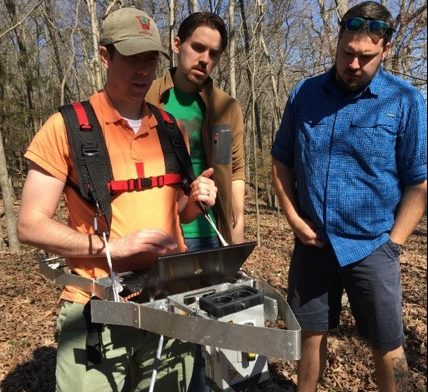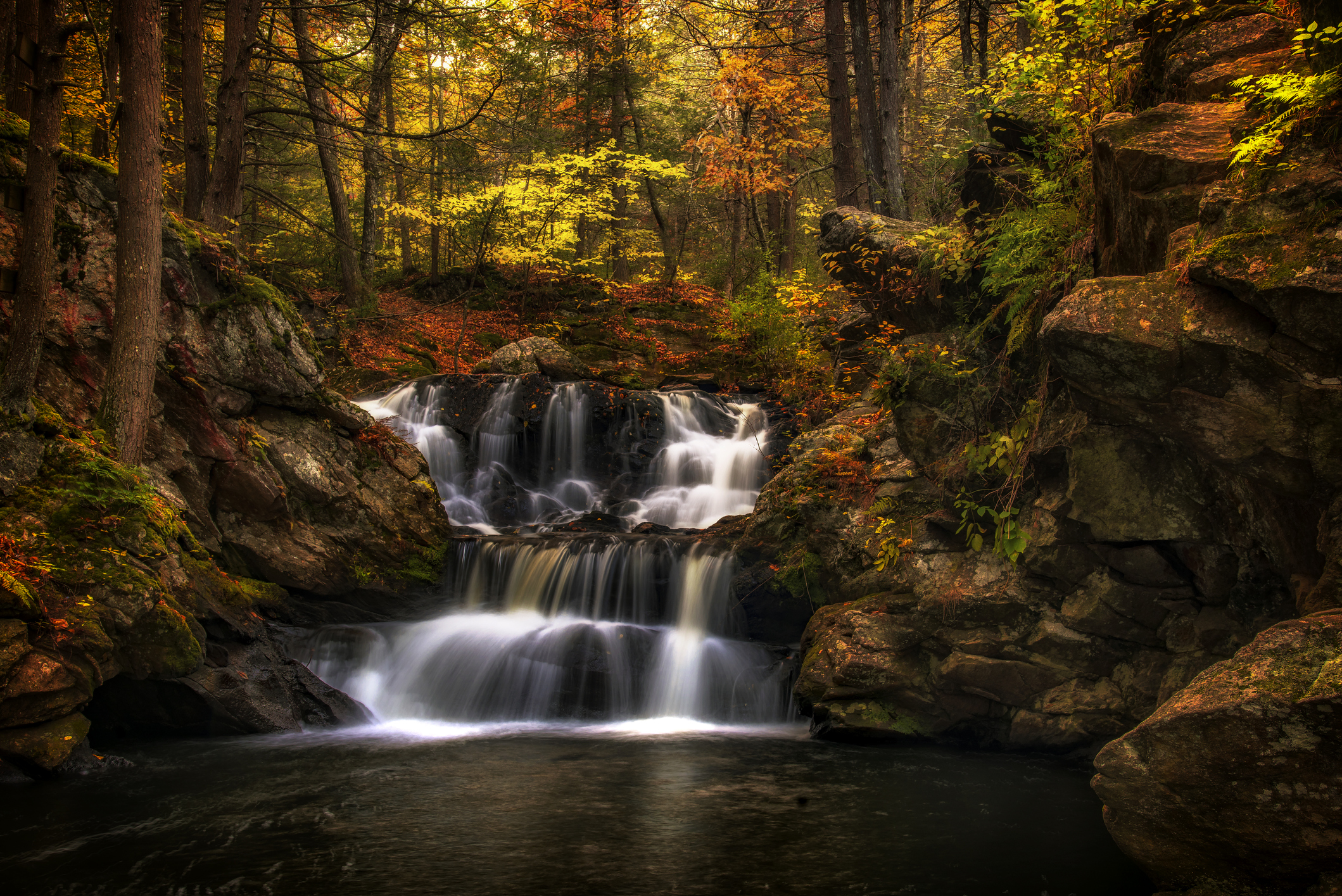Forests in the eastern United States that are structurally complex — meaning the arrangement of vegetation is varied throughout the physical space — sequester more carbon, according to a new study in Ecology, a journal of the Ecological Society of America.
The study by researchers at the University of Connecticut, Virginia Commonwealth University, and Purdue University, demonstrates for the first time that a forest’s structural complexity is a better predictor of carbon sequestration potential than tree species diversity.
“Now there is a recognition of the importance of how the leaf area is arrayed in three dimensions,” says study author Robert T. Fahey, assistant professor of forest ecology and management at UConn. “The variability of the arrangement of that leaf area within the canopy can be important in terms of forest productivity as well as resilience to different types of disturbances and stressors.”
Understanding how forest structure drives carbon sequestration is important for ecologists, climate modelers, and forest managers, who are working on ways to mitigate climate change, says Fahey.
Carbon sequestration is the process by which atmospheric carbon dioxide is taken up by trees, grasses and other plants through photosynthesis and stored as carbon in soil and plant biomass, such as tree trunks, branches, foliage and roots. Carbon sequestration in forests and wood helps offset sources of carbon dioxide to the atmosphere, such as deforestation, forest fires and fossil-fuel emissions, according to the Forest Service of the U.S. Department of Agriculture.

The team measured for complexity by using light detection and ranging (LIDAR), measuring the locations of leaves throughout the forest canopy. In collecting these data not only was total leaf area measured, but also how that vegetation is arranged within space. This variability and complexity have functional importance says Fahey.
Why are structurally complex forests better at carbon sequestration? Chris Gough of Virginia Commonwealth University suggests that multiple layers of leaves may optimize how efficiently light is used to power carbon sequestration in wood.
“Carbon dioxide, a potent greenhouse gas, is taken up by trees through the process of photosynthesis and some of that ‘fixed’ carbon is allocated to wood,” says Gough. “Our study shows that more complex forests are better at taking up and sequestering carbon in wood and, in doing so, they leave less carbon dioxide in the air.”
“In other words, forests that are structurally variable and contain multiple layers of leaves outperform structurally simple forests with a single concentrated band of vegetation,” he says.
To conduct the study, the researchers used a combination of their own data, as well as data from the National Ecological Observatory Network, or NEON, which is funded by the National Science Foundation. NEON is generating long-term, publicly available data for different ecosystems in the U.S., with the aim of understanding decades long ecological processes.
“Many of the ecological indicators of forest growth and carbon sequestration fail to explicitly account for complexity,” Gough said. “These results, we hope, push the science forward by showing that how a forest is put together matters for carbon sequestration. And this relationship extends broadly to a number of different forests, from evergreen to deciduous and mid-Atlantic to Midwest.”
The new study suggests that using lidar to map forest structure could predict the potential of forests to sequester carbon in biomass better than conventional approaches characterizing biodiversity and leaf quantity.
“This could be a major advance because we can likely use aircraft and, just in the last year, satellite data to collect the data needed to predict carbon sequestration from structural complexity,” Gough says. “If we can estimate structural complexity from satellites in the future, then it may be possible to greatly improve our capacity to estimate and predict global forest carbon sequestration.”
The study’s results show what ecologists can do when they embrace new technologies and apply them to fundamental questions such as: What affects forest growth and carbon sequestration?
While the researchers found that structural complexity outperformed species diversity measures as predictors of carbon sequestration, they noted that diversity is also important as one of many components that determine how structurally complex a forest is.
Fahey says future directions include another NSF funded project, characterizing forests based on canopy structure to improve modeling to answer various questions such as how those systems would withstand disturbances and how the ability to sequester carbon may be impacted by more frequent or more intense disturbances such as wind or ice storms.
This work was supported by the National Science Foundation’s Division of Emerging Frontiers, Awards 1550657, 1550650, and 1550639.



